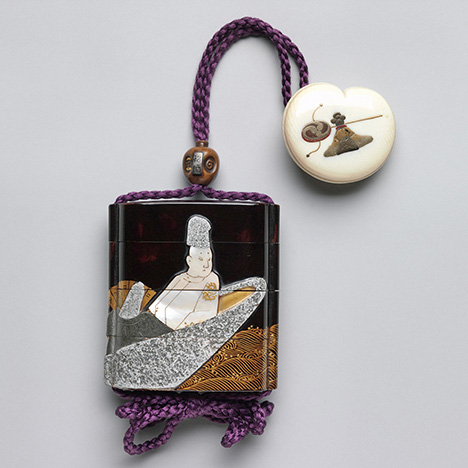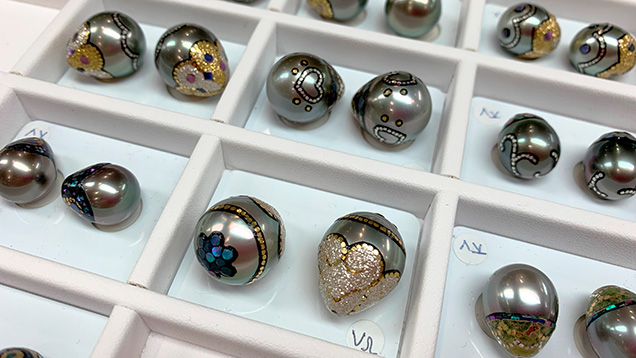Old Techniques Reimagined: Maki-e Pearls

At the AGTA show, Eliko Pearl (New York) exhibited a series of unusual cultured pearls, many of which were worked after culturing to create unique pieces of art. Among these, maki-e pearls caught the authors’ attention.
Maki-e is an ancient Japanese lacquer technique that translates to “sprinkled picture” and is said to have originated more than 1,200 years ago. A fine brush is used to paint a design with lacquer, which is then sprinkled with gold powder before the lacquer dries. More lacquer may then be painted again over the design and polished. For centuries, the meticulous technique has been used to decorate screens, inrō (a type of small case worn in traditional Japanese culture; figure 1), Japanese letter boxes, and other vessels, and it has now been adapted for use on pearls.
A representative from Eliko Pearl explained that each pearl is decorated by hand using a combination of urushi lacquer and 24K gold powder overlay, with abalone shell inlay (figure 2). The natural lacquer is derived from the sap of the urushi tree, which is native to Japan, China, Vietnam, and Southeast Asia. Sap can be harvested from a single tree for 14 to 15 years, during which the tree only yields about 200 grams of material. The sap also goes through a lengthy treatment process before it can be used as a lacquer. After application, the urushi lacquer must cure in a high-humidity environment (70–90%) in a series of thin layers. The time-consuming and laborious process of harvesting, processing, and applying the lacquer on pearls makes urushi lacquer a costly material, but the finished maki-e pearl is a treasured piece of art.
The décor adorns Tahitian pearls predominantly and can be found on matching pairs as well as single pieces. Prices vary from piece to piece based on the detail of the design and the size and shape of the pearl, with the most expensive shape being round (figure 3).




